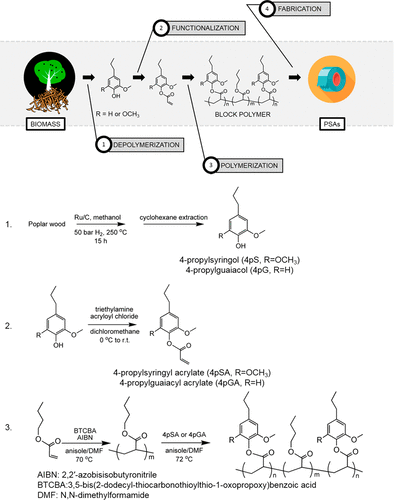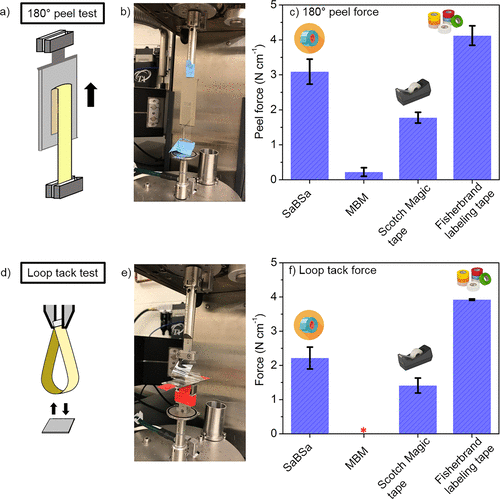Article: From Tree to Tape: Direct Synthesis of Pressure Sensitive Adhesives from Depolymerized Raw Lignocellulosic Biomass
Authors: Shu Wang, Li Shuai, Basudeb Saha, Dionisios G. Vlachos, and Thomas H. Epps
Year: 2018
Journal: ACS Central Science
The compounds that make up trees and plants can be chemically broken down into other building blocks, one of which can be used to generate adhesive. This is exciting because it would allow us to use natural materials to produce products found in everyday life.
In this article the researchers used methanol and a catalyst to break down wood from poplar trees. This method selectively breaks bonds between carbon and oxygen, which allows them to break the molecule into separate building blocks. From this, the researchers were able to purify two compounds, 4-propylsyringol and 4-propylguaiacol, then added a new functional groups, and used them to create a new polymer. Finally, they characterized their product using 1HNMR to determine the chemical structure of the compound produced. A schematic for this procedure can be seen in Figure 1.

The researchers also tested the stickiness of the new adhesive using three different tests. They measured its ability to stick and be removed fully from a surface, by pulling on the tape at a 180-degree angle and looping the tape and sticking it against a surface. They also tested the ability for the tape to withhold force to see if it would creep under weight. They compared their adhesive to other brands including Scotch tape, Fisherbrand labeling tape, and MBM tape. Results of the test can be seen in Figure 2. Overall, the new adhesive performed equally or better than the commercially purchased tapes.

This study shows exciting results for development of naturally derived adhesives. This could help us create more environmentally friendly tape using renewable resources. The technology also proves the usefulness of plant material in creating building blocks for other materials.

